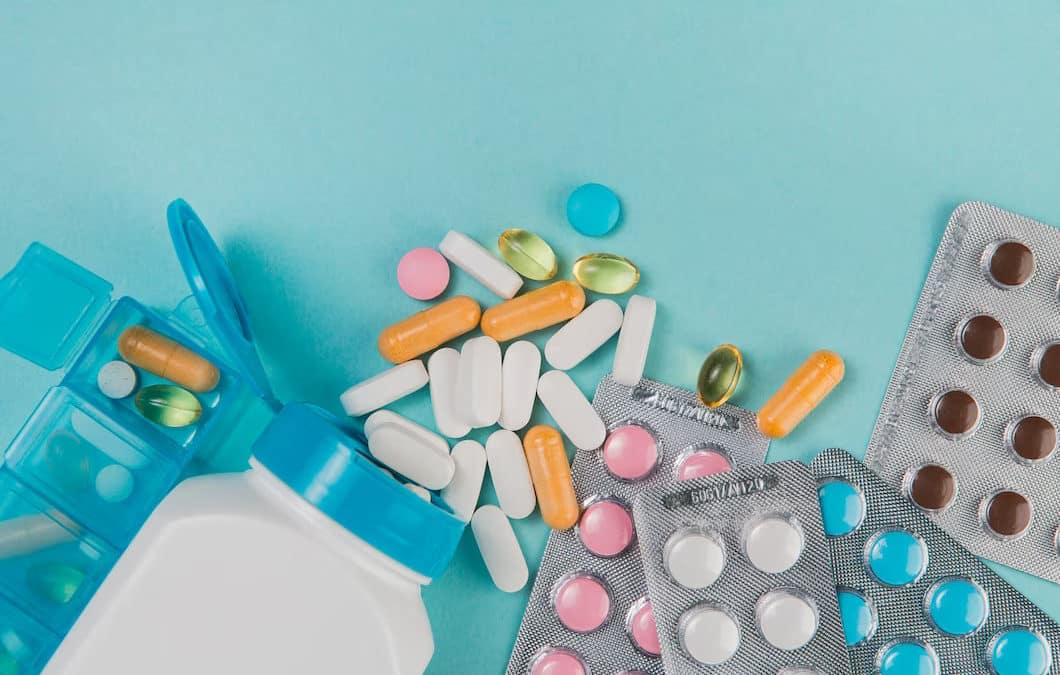Contents
Background
Fentanyl is a synthetic drug, a narcotic of the opioid group, designed in the late 1950s. It is used to treat severe pain, e.g., during surgery as an anesthetic, after surgery for acute (short-term) pain relief, or to ease end-of-life discomfort (chronic pain). Fentanyl falls into two categories. There is pharmaceutical fentanyl (branded) and illicitly manufactured fentanyl (unbranded or in copycat packaging).
What is fentanyl?
The ingredients in fentanyl are manufactured forms of the chemicals found in the opium poppy. The differences are that fentanyl, the synthetic equivalent to morphine, is far cheaper to produce, AND it is up to 100x more potent than morphine.
In 1969, when the FDA approved the use of fentanyl, it was first only available to be injected as an aesthetic or as a last resort, a potent opioid painkiller, under strict medical supervision.
Opioids, including fentanyl and its illicit analogs, work by binding to the receptors in the brain that affect pain and emotions. Opioids relieve pain and offer a sense of euphoria (well-being). Pain relief is the goal. A sense of well-being is welcome but can become addictive even when the need for pain relief has become unnecessary.
What are the benefits of fentanyl?
THE GOOD
- Pharmaceutical fentanyl is used in anesthetic compounds for patients undergoing major surgery,e.g., for cancer, heart conditions, or traumatic accident injury.
- The quick-acting nature of fentanyl makes it ideal in pain management programs for patients suffering from moderate-to-severe chronic pain-pain, which requires continuous relief, e.g., in palliative (end-of-life care)
- People on an opioid-based pain management program may become opioid-tolerant, i.e., the drug is no longer an effective pain killer.
- Because fentanyl is so powerful, it may be prescribed as an alternative to traditional opioid medications.
Fentanyl was initially only available by injection or by IV. Pharmaceutical (prescription) fentanyl is now available in many forms
- skin patches
- lozenges
- ‘lollipops’
- tablets
- oral or nasal sprays
However delivered, pharmaceutical fentanyl has brought pain relief to millions. 4 million prescriptions are issued yearly, indicating the drug’s effectiveness. A drop of two million since 2015, when rapidly increasing overdose rates, has brought about a less liberal approach to prescribing.
Can I expect any side effects from pharmaceutical fentanyl?
THE BAD
This drug is powerful and long-lasting, 24-72 hours in any form. As with all potent drugs, there are side effects.
Among these are
- drowsiness
- confusion
- constipation
- unconsciousness
- slowed respiration
- decreased heart rate
- nausea
- difficulty concentrating
Careful prescription and disciplined dosage management will enable you to take full advantage of fentanyl’s ability to relieve pain.
Pharmaceutical fentanyl is prescribed with assured purity values, precise dosages, and instructions for self-medication.
Your prescribing provider should ensure you are not allergic to fentanyl and narcotics.
It would be best if you prepared to share any pre-existing conditions, such as:
- breathing problems
- head injury
- a stroke
- liver or kidney
- depression or schitzophrenia
Your doctor will need to know if you are or plan to become pregnant or if you are breastfeeding.
Your dosage depends on size, weight, and general health state. The drug’s effect will also depend on how much medication you need and if you are taking other medicines.
The most significant downside of fentanyl is its ability to create addiction/dependency. It is hardly surprising. Fentanyl is up to 30-100 times more potent than morphine. Long-term usage or overdosing can cause the brain to adapt to fentanyl and make it hard for the individual to respond to external stimulations other than the drug itself. It is far easier to become addicted to or dependent on fentanyl than other opioids.
Is illicitly manufactured fentanyl (IMF) safe?
THE UGLY
The short answer is NO.
The CDC reports that fentanyl is responsible for 70% of all drug deaths in the US. Even more concerning is that number attributed to fentanyl in 2020 was 37,202. By 2021 the number had risen to 41,587. That is an increase of 12%(CDC). In 2020 more adults (aged between 18 and45yrs) died from fentanyl overdoes than from Covid-19 or car accidents. (Families Against Fentanyl)
Fentanyl is a synthetic opioid, inexpensive to manufacture and transport. It is manufactured mainly in China and Mexico. It is sold as fake prescription pills/patches (often on social media websites) or through existing drug distribution networks.
Pharmaceutical fentanyl is prescribed in strictly controlled strengths and dosages. Your care provider strictly tracks your care program. Illicit fentanyl has no guarantee of purity, nor are the doses guaranteed to follow your medical needs.
The most significant risk is to recreational drug users. Fentanyl is so powerful that even tiny quantities added by a supplier to a user’s accustomed dose of their ‘drug of choice’ can increase their addiction. And increase the risk of overdose.
Finally
Suppose you are an opioid user, either for medical (prescription) or recreational purposes. There, you are at risk of an opioid overdose. The US Surgeon General recommends having Narcan readily available to provide a short-term antidote to an opioid overdose, time enough to call 911 and save a life.
Narcan is a brand name for the opioid antagonist drug naloxone. Naloxone briefly (30-90 minutes) blocks and reverses the effect of an opioid drug such as heroin or fentanyl. It is delivered by nasal spray or injection. Recognizing the sins of a drug overdose and when and how to use Narcan is vital. Talk to your pharmacist or health provider.
For further information on, see the SAMHSA (Substance Abuse and Mental Health Services Administration) Opioid Over Dose Prevention Toolkit,
Naloxone DrugFacts | National Institute on Drug Abuse (NIDA) (nih.gov)
Image by Freepik
